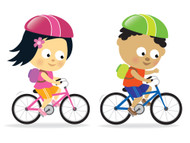Happy November! This month is famous for many things: crunchy leaves, tasty food and of course, big family gatherings. As the air gets crisp and cool, November marks a time of transition from fall to winter, from bonfires to fireplaces and from leaf piles to snow angels. But, one part of November which is often forgotten is National Child Safety and Protection Month.
National Child Safety and Protection Month is an entire month dedicated to recognizing and preventing the unique dangers which face children in their day-to-day lives. For new or expectant mothers, this month is a valuable time to learn about some of the dangers which can affect children, and more importantly learn how to help prevent them. Here are some tips for how to recognize Child Safety and Protection Month, and keep the children in your life safe.
Be safe with food.
When it comes to feeding infants, toddlers and young children, it’s important to be cautious. Children can be more vulnerable to food poisonings and infections, so a general tip is to avoid unpasteurized and raw foods. This can include foods like eggs, milk and dairy products, meat and poultry, undercooked fish or shellfish, sprouts, juices and even honey.
Choking can also be a very serious hazard for many children. Some foods such as hot dogs, hard candies and nuts are difficult to swallow for small kids, and can actually lead to 40% of all child choking deaths. You can help keep your child safe by checking with a doctor before introducing new foods, monitoring what your little one eats and making sure to cut foods into smaller bites whenever possible.
Be safe at home.
According to the Center for Disease Control, on average, 12,175 children ages birth to 19 die each year in the United States from an unintentional injury. Oftentimes, these injuries can be prevented by using caution and safety at home. Some helpful tips for home safety include:
●Use safety gates. Even before your new little bundle of joy starts crawling, safety gates are a simple way to be cautious at home.
●Be mindful of plants. Some common household plants can cause serious sickness if ingested, so use nontoxic plants when decorating—or keep them out of reach entirely.
●Prep for bedtime. Remove any soft, fluffy or loose bedding from your baby’s sleeping area. This includes things like pillows, blankets, quilts, bumper pads and stuffed toys. While these items might look soft and relaxing, a baby can often get tangled in them during the night and risk suffocating.
●Keep all cleaners, medications and other potentially harmful substances up high and out of reach from infants or children, to avoid the risk of consumption. If you do keep anything in lower cupboards, be sure to use a lock on the cupboard.
●When in doubt, use locks. Put child-proof locks on anything and everything open you can find to keep your little one safe at home.
Be safe in the car.
Finally, car safety is critical when transporting a child. However, it can also depend on the child’s age. According to Healthy Children, children under two years of age should ride in rear-facing seats. After which, toddlers should ride harnessed into forward-facing seats until they exceed the height and weight limits set by the manufacturer. Be sure to keep your child in a booster seat until they are big enough to ride with just a seatbelt. A common age range for children to stop using their booster seat is between eight and 12 years old; however, children under 4’9” should continue to use booster seats.
No matter what age the child is, check that the fastening on the seat is secure—not too tight or too loose. If you’re not sure how or when to transition your child in the car, research which safety seat is best for their age and size by looking online with your state department.
Whether you’re a new, expectant mother, or have been a mother for years, we know your child’s safety is your highest priority. This November, recognize Child Safety and Protection Month by taking these tips into consideration and keeping your little one as safe as possible.
